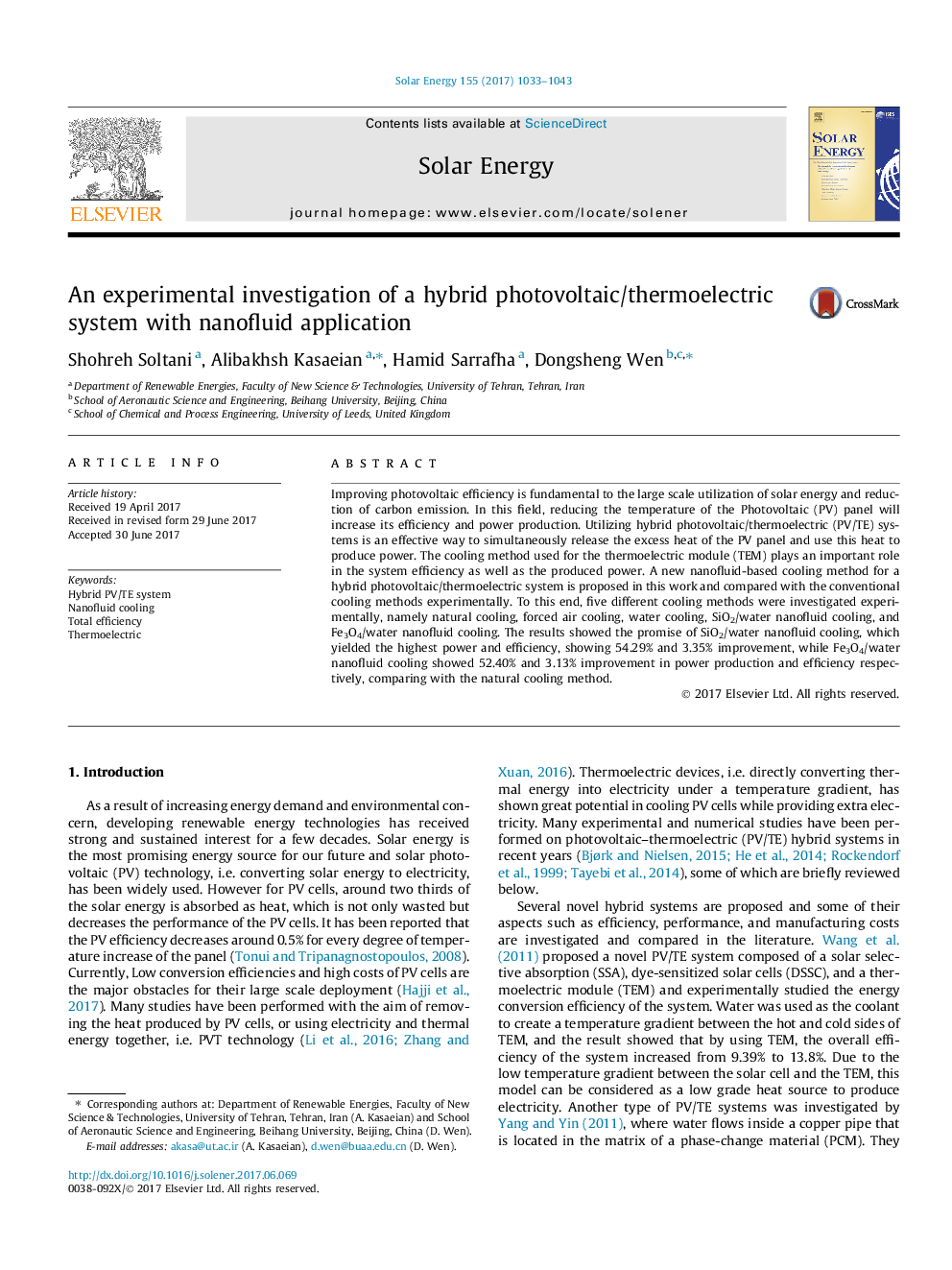| Article ID | Journal | Published Year | Pages | File Type |
|---|---|---|---|---|
| 5450690 | Solar Energy | 2017 | 11 Pages |
Abstract
Improving photovoltaic efficiency is fundamental to the large scale utilization of solar energy and reduction of carbon emission. In this field, reducing the temperature of the Photovoltaic (PV) panel will increase its efficiency and power production. Utilizing hybrid photovoltaic/thermoelectric (PV/TE) systems is an effective way to simultaneously release the excess heat of the PV panel and use this heat to produce power. The cooling method used for the thermoelectric module (TEM) plays an important role in the system efficiency as well as the produced power. A new nanofluid-based cooling method for a hybrid photovoltaic/thermoelectric system is proposed in this work and compared with the conventional cooling methods experimentally. To this end, five different cooling methods were investigated experimentally, namely natural cooling, forced air cooling, water cooling, SiO2/water nanofluid cooling, and Fe3O4/water nanofluid cooling. The results showed the promise of SiO2/water nanofluid cooling, which yielded the highest power and efficiency, showing 54.29% and 3.35% improvement, while Fe3O4/water nanofluid cooling showed 52.40% and 3.13% improvement in power production and efficiency respectively, comparing with the natural cooling method.
Keywords
Related Topics
Physical Sciences and Engineering
Energy
Renewable Energy, Sustainability and the Environment
Authors
Shohreh Soltani, Alibakhsh Kasaeian, Hamid Sarrafha, Dongsheng Wen,
